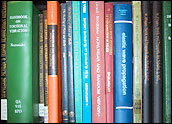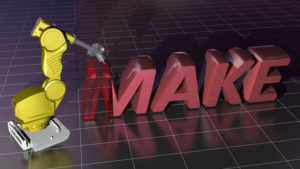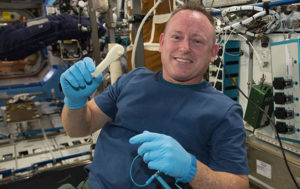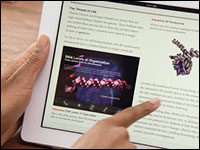
The publishing industry is struggling to cash in on eBooks; so far the digital literary attempt has been fragmented and slow, both in terms of adoption and in getting the material to the reader. However, that may change soon, given new initiatives announced in the last few days ranging from the arrival of new industry standards to a new reader with some cool effects.
Until recently, publishers have slogged their way through a hodge-podge collection of technologies, trying to get books to readers in a digitalized format with mixed success. Still, they continue to think eBooks are worth the effort.
“Simon & Shuster is platform agnostic,” Adam Rothberg, vice president of corporate communications at Simon & Shuster, told TechNewsWorld. “We work with all the major platforms because we think eBooks will be big business eventually. They will never replace printed books, but they will be a big part of our business.”
Oddly, publishers have no favorites among the current spread of eBook formats. “We love all our children,” laughs Rothberg. “Ultimately, the consumer will decide what it likes.”
The waiting game appears to be the same strategy adopted by all leading publishers. “It’s true — publishers do not have a favorite or a preference at this point,” Steve Potash, CEO of Overdrive and president of the International Digital Publishing Forum (IDPF) told TechNewsWorld. “The field is wide open, and Adobe is well-positioned to seize the market.”
Adobe’s Approach
This week, Adobe Systems announced the release of Adobe Digital Editions 1.0, a new software application for acquiring, managing and reading eBooks, digital newspapers and other digital publications. It is available as a free download for Microsoft Windows and Macintosh systems.
By using a new export feature built into Adobe InDesign CS3, publishers can create new Adobe Digital Editions-ready content, helping to significantly reduce cost and conversion time. In addition, with versions for mobile platforms and reading devices also planned, Sony has committed to embed Adobe Digital Editions technology into its portable reader product line.
With native support for Adobe Portable Document Format (PDF) and XML-based publications, Adobe Digital Editions already works seamlessly with more than 150,000 commercially published titles. Using Adobe Digital Editions 1.0 readers will find that content automatically re-flows, adapting to different screen sizes, and support for Adobe Flash software promises to enhance digital publications through the integration of rich audio and video.
The public beta of Adobe Digital Editions generated more than 300,000 downloads in less than six months, and user feedback influenced the feature set. Adobe Digital Editions now enables users to annotate content through bookmarks, highlights and text notes. The library view offers advanced organization with multiple bookshelves. A slick new user interface enhances zooming and the overall reading experience, while support for the new IDPF Open Publication Standard (OPS) for XHTML-based reflowable eBooks guarantees a seamless viewing experience.
“At less than 3 MB, the file is so small that it downloads instantly,” says Potash.
Adobe Digital Editions works in conjunction with Adobe Digital Editions Protection Technology (ADEPT), a new, hosted content protection service to guard publishers’ rights while maintaining ease-of-use for consumers. ADEPT supports the company’s Adobe Content Server (ACS) technology and protects both PDF and reflow-centric OPS XML eBooks. Purchase and lending business models include library lending, subscription and ad-supported models.
‘New Growth Phase’
It looks as though the publishing industry is going to take a cue from the movie and music industries and pick things up a pace at least. “This is an exciting time in the eBook space,” says Potash. “It’s starting to enter a new growth phase, everything’s accelerating as new standards help reduce costs for publishers.”
IDPF, formerly the Open eBook Forum (OeBF), is the trade and standards association for the digital publishing industry. It announced the release of new standards for eBooks in recent weeks. IDPF has previously developed the already widely adopted Open eBook Publication Structure (OEBPS) standard.
The Container Format working group is set to release a container format to allow publishers to release only a single standard file into their sales and distribution channels instead of the multiple proprietary files that they currently produce. The new ZIP-based proposed standard, OEBPS Container Format (OCF), is an extension of the packaging format defined by the OpenDocument OASIS Standard (ISO/IEC 26300).
“Adobe has been very pleased with the rapid progress within IDPF towards creating an open and neutral container format,” said Bill McCoy, general manager of ePublishing for Adobe. “An open packaging technology clearly has applicability across multiple areas of our solutions, including eReading systems, and we look forward to working with industry participants to finalize this community-developed standard in the coming months”.
The container format is expected to be submitted to the IDPF for official approval in the next several weeks. A draft specification is publicly available.
Hardware’s Angle
In a second specification, the OEBPS Working Group is developing the next generation of OEBPS to improve this XML-based standard as both a production and a final delivery format for digital publications. The effort will focus on detailed control of content rendering, navigation and accessibility, and alignment with other standards efforts.
“Mobipocket has been a great supporter of open standards in the eBook world since the OEBPS creation. We are excited about this new initiative, which is the right way to go to make this market mainstream. We plan to fully support this new standard in our product line,” said Thierry Brethes, CEO & cofounder of Mobipocket.com, an Amazon company.
Hardware companies have also voiced implementation plans. “iRex Technologies will support the development of these standards as it will accelerate the momentum in electronic reading,” iRex Technologies’ VP Marketing and Business Development Willem Endhoven said. “We believe that consumers will benefit from a more harmonized, open system approach and simplicity of use. We expect to support the IDPF standards for use in the iLiad e-reader in the future.”
IDPF has recently joined the OASIS (Organization for the Advancement of Structured Information Standards) international standards consortium, and hopes that the IDPF OCF may be further advanced within OASIS as a general file containment technology standard.
“We are happy to have the IDPF join our organization and pleased that they plan to contribute proposed extensions to the OpenDocument OASIS Standard for their Open Container Format,” said James Bryce Clark, director of standards development at OASIS. “We are looking forward to working with them on future standardization efforts.”
IDPF is also cooperating closely with DAISY (Digital Access Information System), which is a member of the IDPF. The upcoming OEBPS revision is working to be aligned with requirements of the DAISY-based NIMAS initiative for accessible K-12 textbooks.
“The disability community is looking forward to the day when commercial eBooks are usable by persons with disabilities with their assistive technologies,” said George Kerscher, secretary general of the DAISY Consortium.
The combined standards efforts will result in a non-proprietary way for publishers to deliver digital books through the distribution chain to consumers, similar to the MP3 format for digital music. No patent encumbrances are expected of either new specification.
After standards are set and formats are improved, will eBooks find a place in readers’ hearts?
“We need to remember that the majority of people already spend their time staring at computer screens on a daily basis. I’m still not convinced anyone would want to come home, slide into bed, and then curl up with an eBook reader the same way they would with a traditional book,” novelist Jon F. Merz told TechNewsWorld. “There are other senses engaged when it comes to reading for pleasure and no one has found a way to mimic those tactile and psychological experiences yet.”





















































